England v Australia 1928 : test cricket comes to Queensland
By Simon Miller, Library Technician, State Library of Queensland | 18 July 2013
The year 1928 saw the culmination of a long campaign to bring test cricket to Queensland. The admission of Queensland to the Sheffield Shield competition in 1926 had opened the door. International cricket had been played in Queensland since 1883 when an English touring side visited the state and played a match against the Queensland team but efforts to bring test cricket to Brisbane for the England tour of 1907-08 were unsuccessful. The facilities at the Brisbane Cricket Ground were not up to scratch and Queensland cricket authorities returned to the Exhibition Ground which had not been used for first class cricket for some years. This move proved successful and on 30th November 1928 the first test of the series against England began at the Brisbane Exhibition Ground. The Brisbane Courier eagerly anticipated the first test.
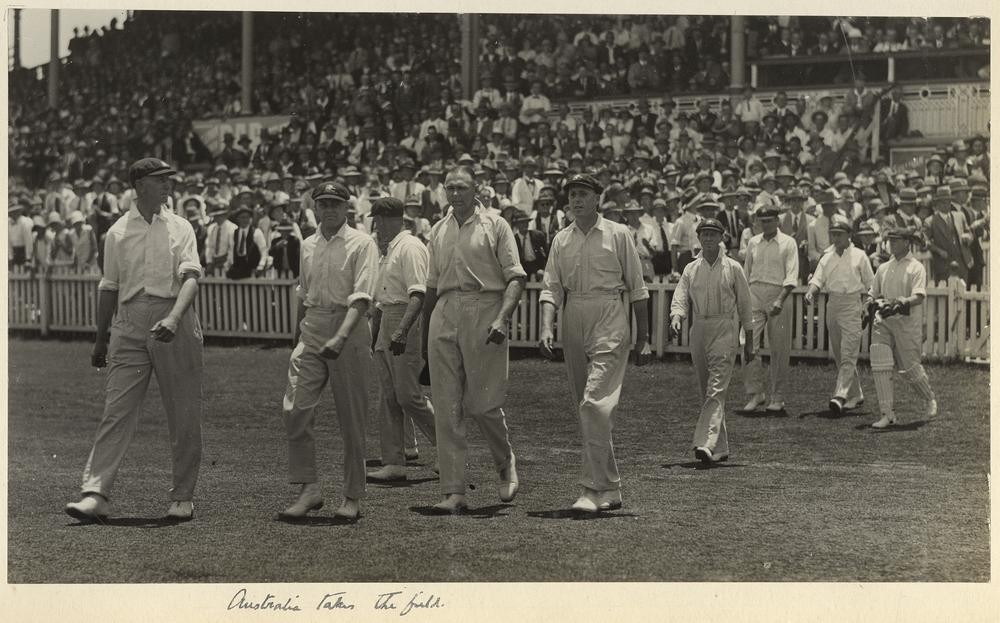
Australian test cricket team in Brisbane, 1928
Supporters of cricket in Queensland have had their way after a long up-hill fight, and Brisbane is to have a Test match. Two main reasons used to be advanced against holding one of the Tests in this city. The first was that the status of Queensland itself as a cricketing State did not warrant any change. That, reason has lost weight, since Queensland now competes for the Sheffield Shield, and is recognised as a State of great cricketing possibilities. The other reason was that the wicket in Brisbane was not good enough for Test cricket. That objection also has been removed, for during the last visit of an English team to this city it was amply demonstrated that the wicket at the Exhibition Grounds could compare very favourably with the wickets in the South. Once a distinguished English cricketer opposed the holding of a Test in Brisbane "because Brisbane was too hot." Such an objection is not seriously raised nowadays, and we doubt whether that particular player was in earnest. There remains then for the success of Brisbane's first Test match only a liberal patronage on the part of the public.
The public did indeed turn out in large numbers. Special trains brought people pouring into Brisbane from surrounding areas. The success of the event was celebrated in Queensland Figaro.
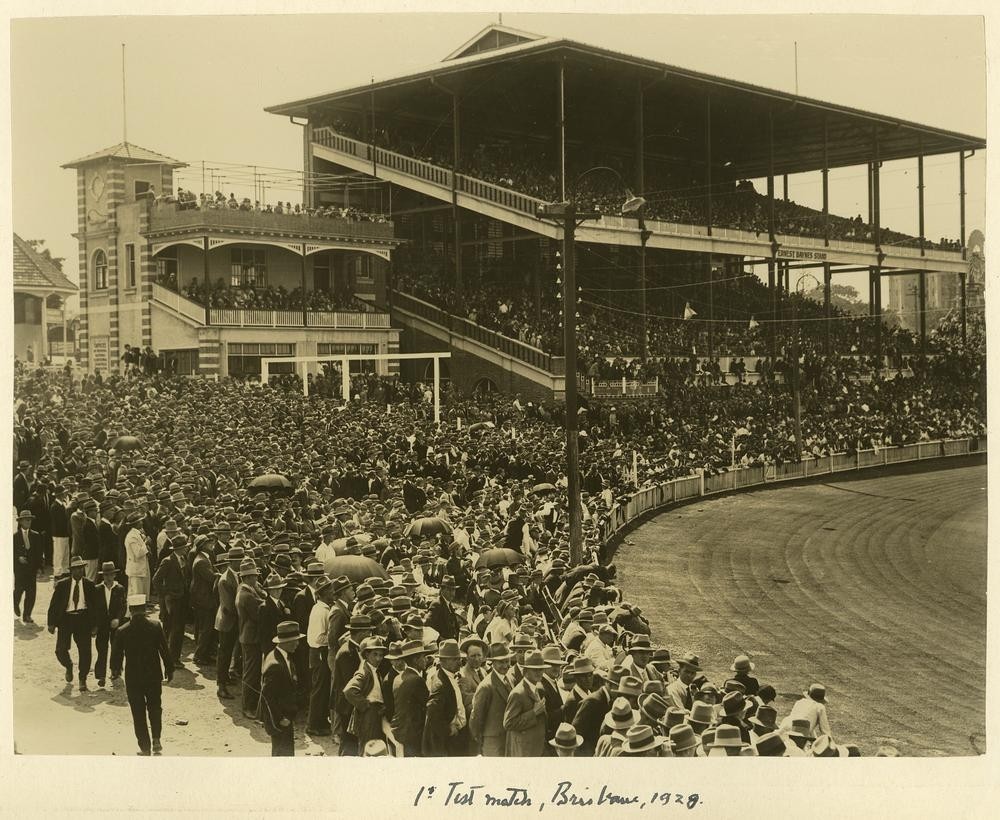
Ernest Baynes Stand at the Exhibition Grounds, Brisbane, 1928
Perhaps, the most pleasing aspect of the game was the unbounded enthusiasm it aroused in Brisbane and Queensland generally. Goodness knows, we all have waited long and patiently enough for Queensland's rightful recognition in the cricketing world. As a matter of cold fact, Queensland should have had its Test Match years ago. I don't suppose we would have had that undeniable privilege and right even now had not unanswerable pressure been brought to bear. And so it came to pass that on Friday last we saw the soul-satisfying spectacle of England and Australia's cricketing giants begin the first test match on our splendid Exhibition oval. And Queensland, for once at least, had thereby come into its own at long last. The critic and the carper has been given his quietus, and on future tours of English Elevens a test match for Queensland is assured. The scene at the Exhibition Ground last Saturday, when 40,000 persons packed themselves into the spacious arena, should, and will, effectively silence those who would say "Nay" to a test match being played in Queensland's capital city.
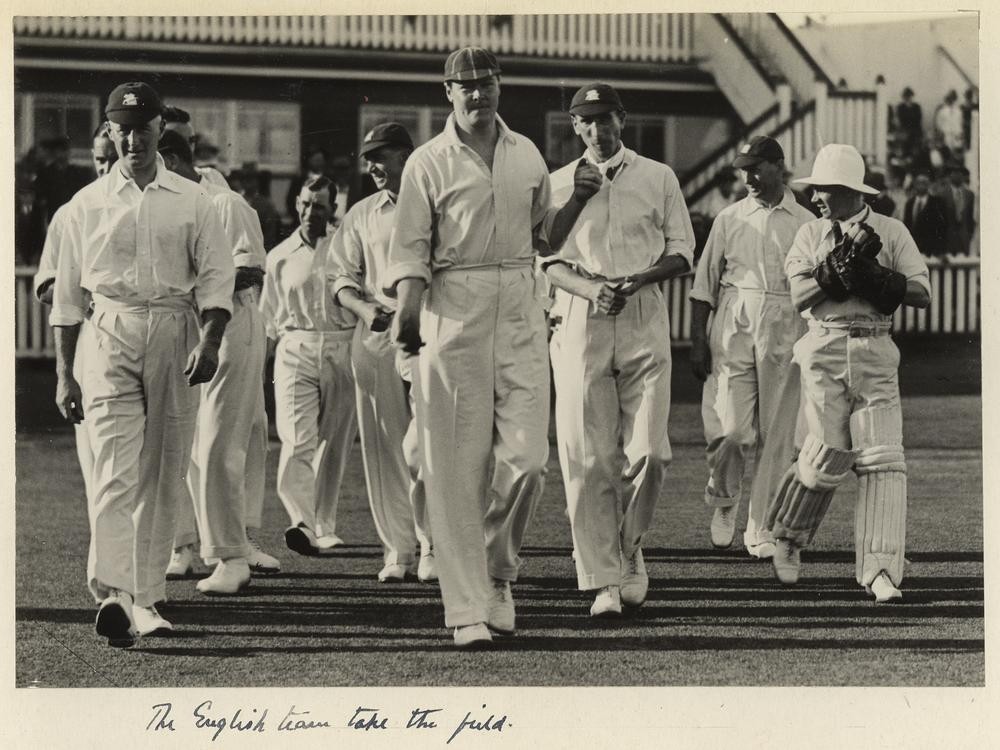
English cricket team at the test match held in Brisbane, 1928
Sadly the actual cricket was a disaster for Australia with England winning the match by a record 675 runs. The English side enjoyed the best of the conditions, posting scores of 521 and 8 declared for 342. In reply Australia could only manage 122 and 66 with the young Don Bradman, in his first test appearance, making 18 and 1 and being dropped for the second test. Conditions on the last day were a nightmare for the batting side after heavy overnight rain on the uncovered pitch as described in the Burnie Advocate.
Heavy rain during the night and warm sun this morning made the weather very steamy today, but towards midday a good breeze sprang up, and conditions were more pleasant at the cricket ground. Fifty-four points of rain fell at the ground, and had its effect on the wicket, which was damp, and looked like being troublesome for the batsmen. The Australians, therefore, in their hopeless position, had no chance of even making a fight of it. Resuming with one out for 17 and 725 runs to make, they had to face bowling, on a wicket made for them. Only a few balls had been bowled when the batsmen started patting down the pitch, and the bowlers were wiping the mud off the ball.
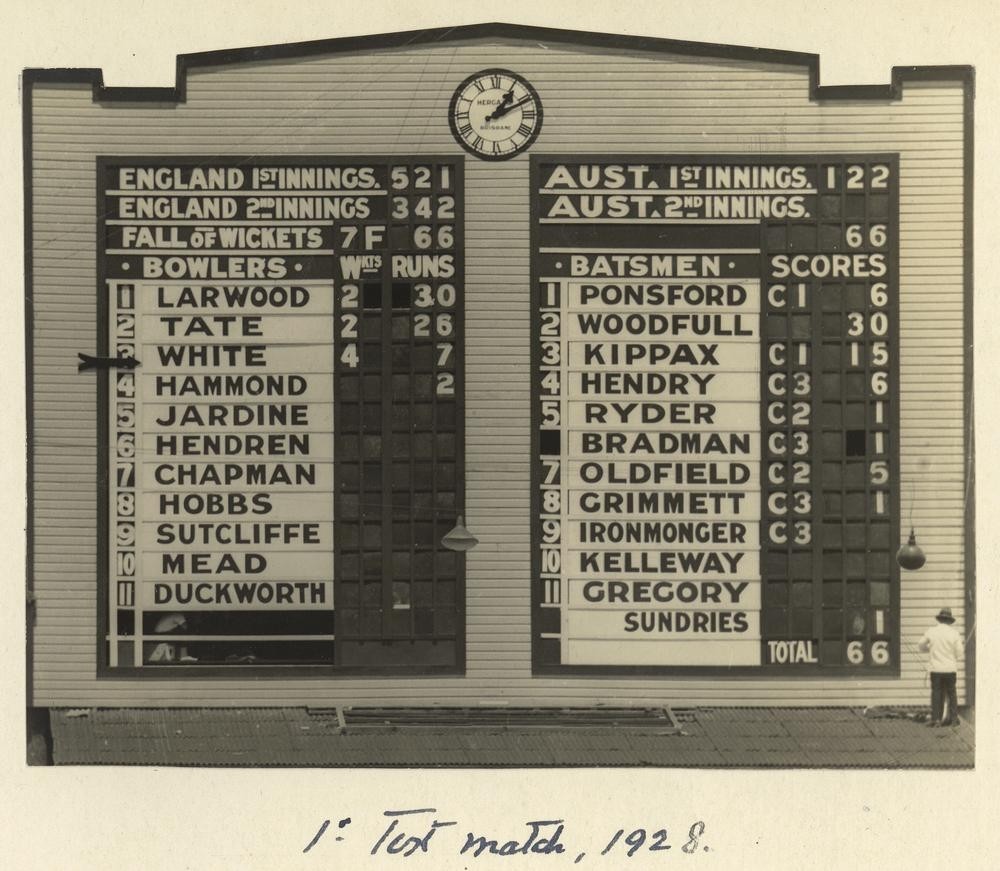
The scoreboard tells the story - Australia all out for 66
There were no Queensland players in the starting eleven for Australia although local allrounder Ron Oxenham was 12th man and took a catch to dismiss Sutcliff in the second innings. The side also included Victorian slow bowler Bert Ironmonger who was born in Queensland. Three Queensland players featured in the other matches of the series. Otto Nothling, a medium pace bowling allrounder played in the second test in Sydney. Ron Oxenham played in the last three tests and was joined in the last test in Melbourne by slow bowler Percy Hornibrook. This was the first time two Queenslanders had been in the Australian test team and both contributed to Australia's only winning performance of the series.
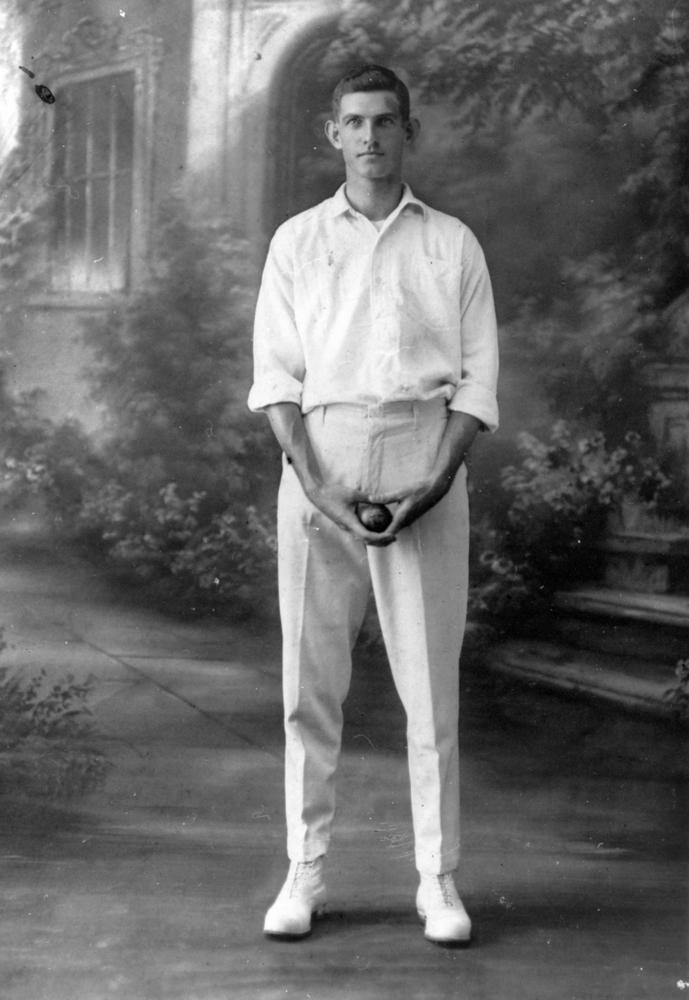
Queensland bowler Percy Hornibrook
Resources in the John Oxley Library include the Official souvenir of Queensland's first test match and other texts including The Brisbane tests and A cricket centenary England in Queensland by Warwick Torrens, Green Hills to the Gabba : the story of Queensland cricket by Ian Diehm and A history of Queensland cricket by E. H. Hutcheon.
Stop Press: read about the recent discovery of the complete autographs of the English and Australian teams in a copy of Pugh's Almanac.
Simon Miller - Library Technician, State Library of Queensland
Comments
Your email address will not be published.
We welcome relevant, respectful comments.